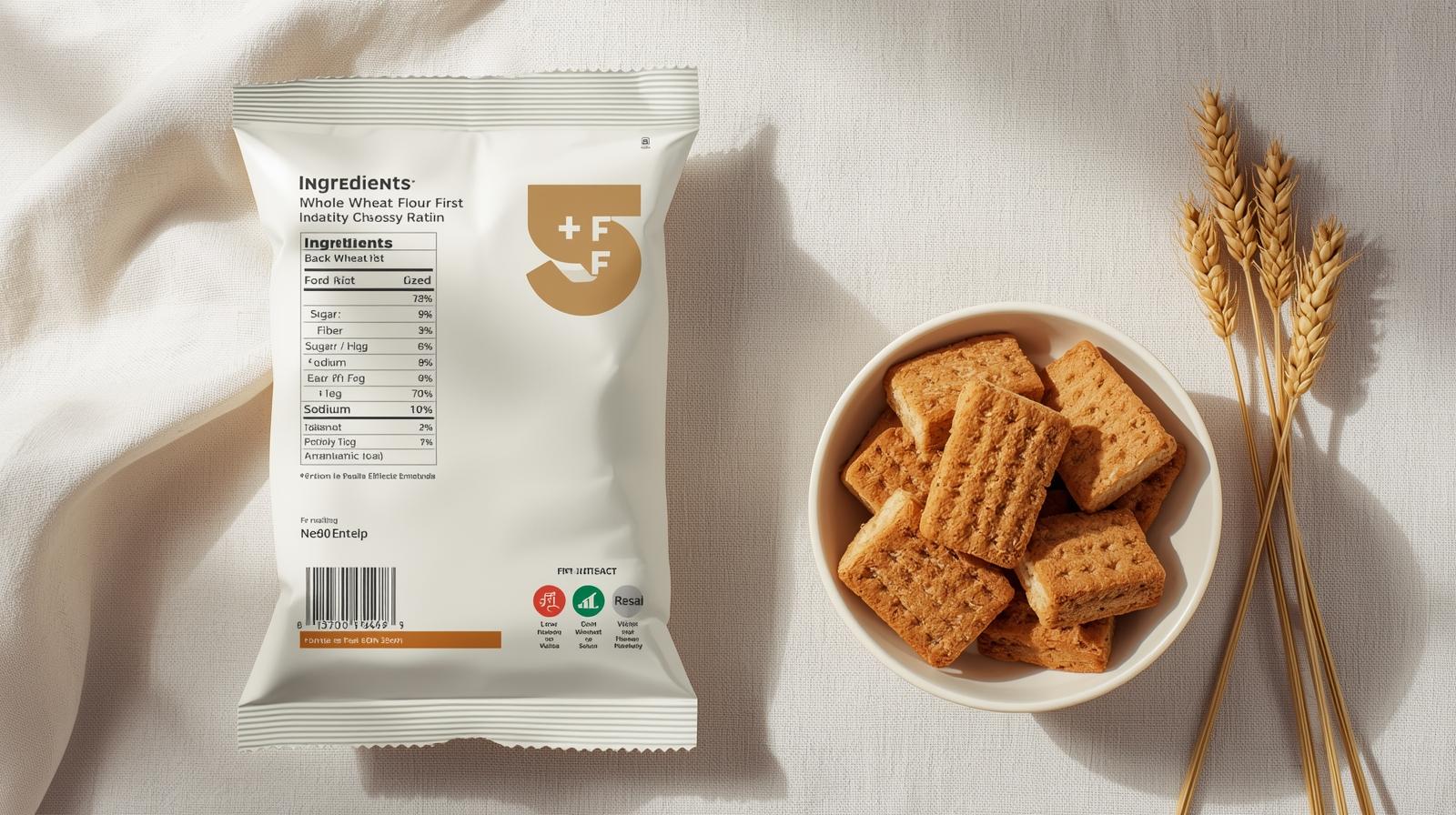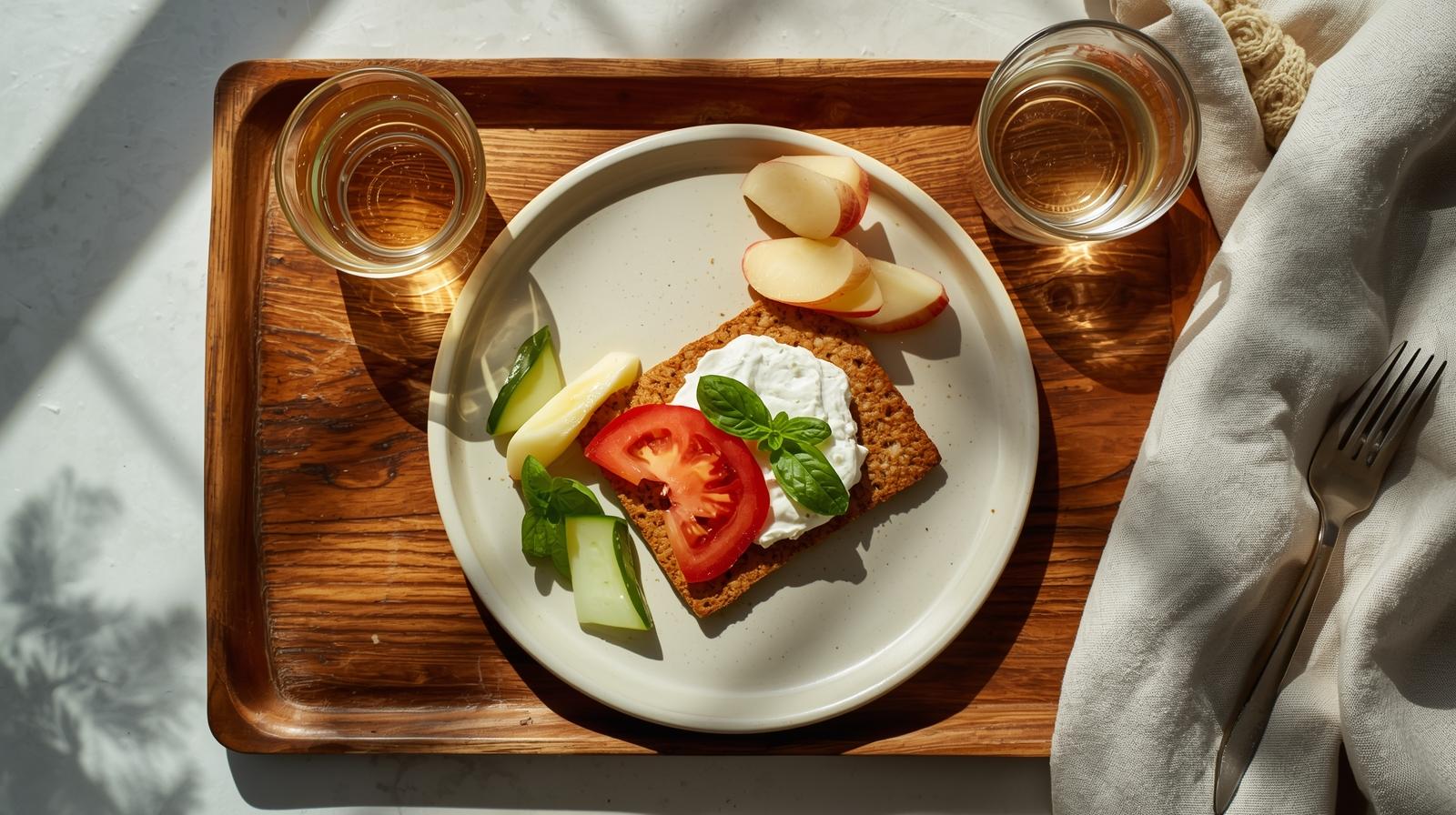
Rusk in Pregnancy — The Short Answer
Yes—rusk can be pregnancy-friendly as part of a balanced diet. It’s dry and low-moisture (not a typical bacterial-risk food). The real questions are about ingredients and portions: choose wholegrain/atta rusk over maida, prefer lower-sugar versions, mind sodium, and avoid very dark/charred pieces. If you have gestational diabetes (GDM) or are watching blood sugar, pair rusk with protein/fiber and keep servings small. [1] [5] [6] [3]
Rusk 101 — Twice-Baked, Dry, and Shelf-Stable
Rusk is bread that’s baked, sliced, and baked again to remove moisture—giving you that hard, crunchy texture. Because it’s dry and shelf-stable, it’s not like soft, high-moisture foods that raise pregnancy safety flags (e.g., unpasteurised cheeses). The pregnancy-relevant levers for rusk are grain type (wholegrain vs maida), added sugar, sodium, and browning level. [1] [3] [4]
- Grain: Wholegrain/atta versions add fiber and micronutrients; maida versions are more refined.
- Sweetness: Some brands add plenty of sugar (and sometimes glucose syrup). Scan grams per 100 g.
- Sodium: Sodium can creep up in savory rusks (seasoned, salted). Check mg per serving. [3]
- Browning: More browning can mean more acrylamide; lighter is a simple precaution. [4]

Labels that Matter: Wholegrain, Sugar, Sodium & Fortification (+F)
1) Choose Wholegrain/Atta First
- Look for whole wheat as the first ingredient.
- Fiber helps digestion and satiety; many pregnant people fall short of the ~28 g/day intake target. [10]
- Wholegrains align with pregnancy diet guidance. [1] [7]
2) Scan Added Sugar
- Prefer “plain”/“no added sugar” versions or the lowest sugar per 100 g you can find.
- Even “milk” or “elaichi” rusk can be sugary. ACOG suggests limiting added sugars in pregnancy. [7]
3) Mind Sodium
- WHO suggests <2,000 mg sodium/day (~5 g salt). Savory rusks can add up. [3]
- Compare labels; choose lower sodium per serving and keep portions modest.
If You Have Gestational Diabetes: Lower-GI Tactics
All carbohydrate affects blood glucose; the type, amount, and timing matter. If rusk features in your snacks, use these tactics: [5] [6]
- Choose wholegrain/atta rusk; it’s generally lower GI than highly refined versions.
- Pair with protein/healthy fat to slow glucose rise (curd/yogurt, a thin layer of nut butter, paneer bhurji side).
- Watch portions: try 1–2 small pieces at a time; see how your meter/CGM responds (if you’re monitoring).
- Spacing: eat as part of a planned snack, not on top of a large carb meal.
Nausea & Food Aversions: Can a Plain Rusk Help?
Many find that plain, dry carbohydrates help ease nausea, especially in the first trimester. A small piece of plain rusk alongside water, ginger tea, or milk may be soothing. Keep sips frequent, avoid strong aromas, and eat small, regular snacks. If vomiting is severe or persistent, contact your antenatal team. [2]
Browning & Acrylamide — Why “Golden” Beats “Charred”
Acrylamide forms when starchy foods are cooked to deep brown at high heat. You don’t need to avoid rusk, but sensible steps are to choose lighter-browned pieces, avoid over-toasting, and keep variety in your diet (fruits, veg, dairy, pulses, lean proteins). That’s exactly the pattern food agencies advise. [4] [1]
Portions & Timing for Comfort
Rusk is calorie-dense for its size. For comfort and balanced intake, mini portions work well: one small piece mid-morning, or one with evening tea, especially if your main meals already include rice/roti. If you’re managing reflux, keep high-fat spreads light and avoid big late-night snacks. Wholegrain choices add fiber toward the ~28 g/day pregnancy target. [10] [1]

Buying & Ordering: Quick Playbook
- Read ingredients: Prefer “whole wheat flour” first; avoid “sugar/glucose syrup” at the top of the list. [7]
- Compare per-100g tables: lower sugar (aim single-digits/100 g if possible), modest sodium, higher fiber. [3]
- Look for +F: The FSSAI +F logo indicates fortification (iron/FA/B12) for wheat flour/maida products. [8] [9]
- Pick “golden,” not dark: Avoid overly browned/charred pieces. [4]
- Pair smart: Add protein/fiber (curd, paneer, nut butter, veg) to keep you fuller for longer. [5]
When to Pause or Personalize
If you’re advised to follow a specific carbohydrate plan (e.g., gestational diabetes meal plan), run rusk portions past your dietitian and personalize based on readings. If you notice rapid glucose spikes with rusk—even wholegrain—swap to alternative snacks (e.g., fruit + curd, chana salad) that suit your targets better. [6] [5]
Pregnancy FAQ — Rusk
Is rusk safe in pregnancy?
Yes—rusk is a low-moisture, twice-baked product, generally safe when fresh and from a reputable brand. Choose wholegrain/low-sugar options, mind sodium, and avoid overly charred pieces.
Which rusk is better—maida or whole wheat?
Wholegrain/atta rusk with higher fiber and lower added sugar is better for steady energy and digestive comfort.
Is rusk good for morning sickness?
Plain, dry carbohydrates can help some people with nausea; small amounts of plain rusk with fluids may be soothing. Seek help if symptoms are severe or persistent.
What about gestational diabetes?
Watch portions, pair with protein/fiber, and choose wholegrain, lower-sugar options. Consider lower-GI patterns and monitor your readings.
Does browning matter (acrylamide)?
Acrylamide forms in heavily browned starchy foods. Prefer lighter-browned pieces and avoid charring as a simple precaution.
What does the FSSAI ‘+F’ logo mean?
It marks fortified foods. Wheat flour/maida products may include iron, folic acid and vitamin B12—useful micronutrients in pregnancy.
